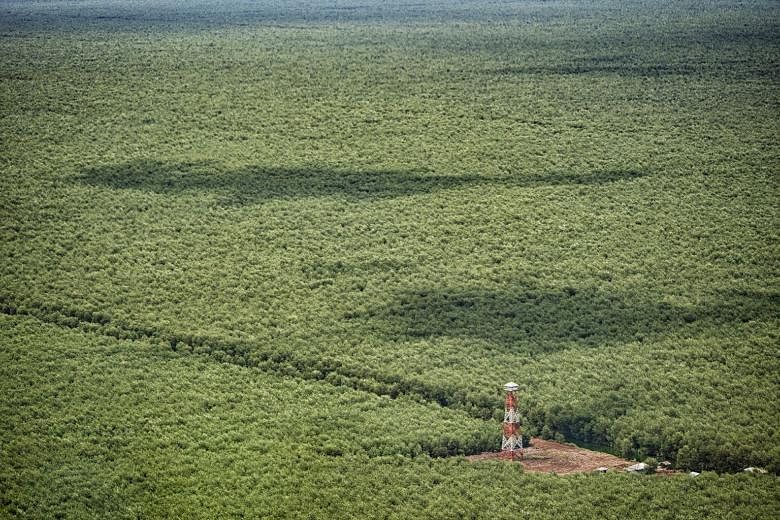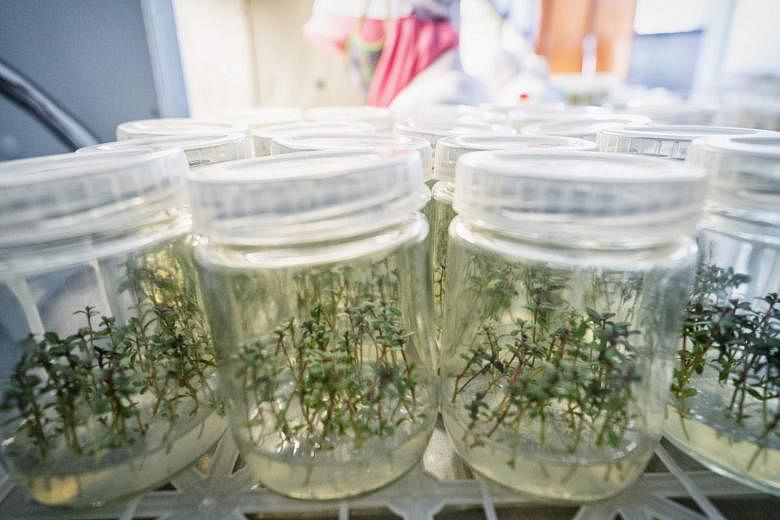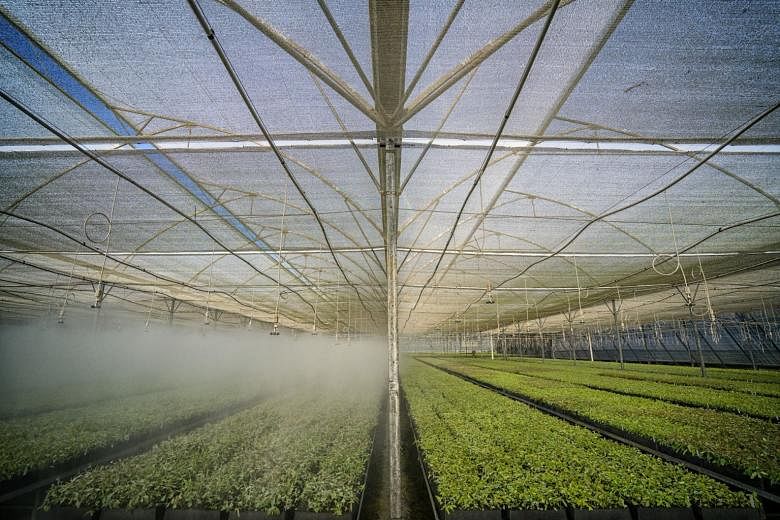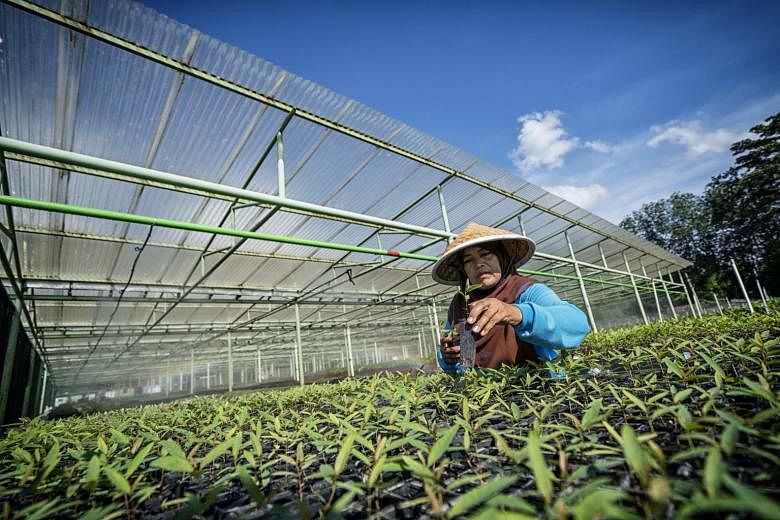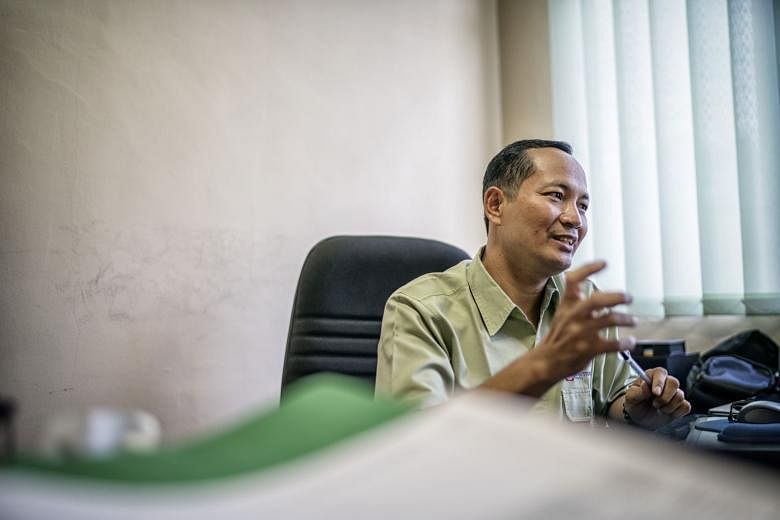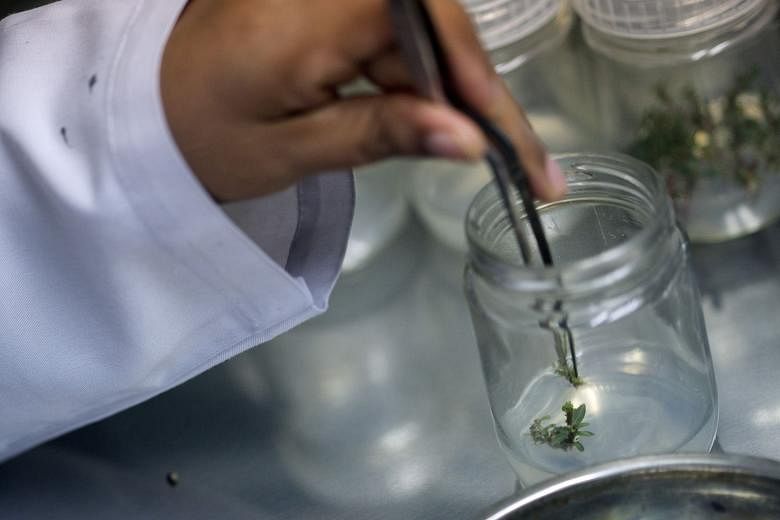PEKANBARU: Vistas of large green swathes greet the eye from the vantage of a helicopter seat. Keeping this valuable natural resource free from land-clearing fires is the challenge facing Asia Pulp & Paper (APP).
The pulpwood giant today backs efforts to keep its plantations and surrounding forests pristine with a zero deforestation policy. The company believes that its education drives and on-going research into environmentally safe farming methods are bearing fruit, with its influence now extending beyond its own 2.6 million ha - the size of 3.7 million football fields.
People, natural forests and agricultural districts under its care are thriving says APP, a far cry from 2015, when the haze crisis held them in a chokehold.
At the time, smoke eclipsed the islands of Sumatra and Borneo in Indonesia, then spread across the region as far as Malaysia, Thailand and the Philippines. Fires ravaged more than 2 million ha of land, and pollution reached hazardous levels of over 1,000 PSI.
The haze only lifted after about four months of intense firefighting that employed cloud seeding and water bombing. In its place settled a new and urgent resolve to prevent its return.
Policy makers, corporates and local communities were galvanised into action. Their first course of action: confront the annual threat of forest fires during the dry season from May to September.
To clear land for plantations in the quickest and cheapest way, peatland would be drained and vegetation burnt, causing defores- tation and igniting a deadly chain reaction.
In 2011, a moratorium lodged by the administration of President Susilo Bambang aimed to reduce emissions from such fires. It bans the issuing of new licences to use land designated as primary forest and peatland.
As at last November, this moratorium extended to an area of over 66 million ha. In May, President Joko Widodo renewed the prohibition a third time, extending its term for another two years.

Reversing the damage
APP, which in 2015 was criticised for contributing to the haze, now spearheads campaigns in education and research. Its aim is to protect natural forests throughout its supply chain from external threats such as fire, illegal logging and encroachment, by teaching local communities sus- tainable farming practices and alternative methods for clearing land for agriculture.
In 2013, it implemented its Forest Conservation Policy, setting a goal of zero deforestation across its supply chain. It would maintain natural forests, committing to clear only areas designated for its production.
By 2015, it completed assessments of all concessions run by its 38 suppliers, and identified forests of High Conservation Value and High Carbon Stock to determine exactly the size of natural forest to leave intact.
One such example is the Giam Siak Kecil-Bukit Batu Biosphere Reserve, one of APP's larger protected areas, which lies near its Perawang Mill in the Riau province.
It is the seventh Indonesian Biosphere Reserve established under the Unesco Man and Biosphere Programme in 2009 and meets its standards as a reserve that is useful for conservation, research and development and supports sustainable development of local communities.
The 705,271 ha region, mostly covered by peat swamp forest, is a unique habitat for more than 150 bird species and mammals, as well as over 189 plant species. Of these, 29 plant species and at least nine animals are protected, including the Sumatran tiger, sun bear and two crocodile species - the saltwater crocodile and false gharial.
At its heart is a Core Area, made up of the Giam Siak Kecil and Bukit Batu wildlife reserves. Not only is it a permanently protected primary forest, but also a wildlife corridor for native flora and fauna, which is rich in biodiversity, said Mr Muhammad Syarif Hidayat, the head of Forest Sustainability at Sinar Mas Forestry.

"Previously, it was hard for us to stop outsiders from coming to burn our land. But five years ago, the government became more strict. Companies have become slightly more compliant," he said.
The broad circumference of the Core Area is the Buffer Zone, which consists of commercial pulpwood plantations managed by Sinar Mas Forestry and its partners. It serves as a sustainable source of pulpwood.
The outermost ring is a Transition Area occupied by commercial palm oil plantations, agricultural cultivations and settlements of farmers, workers and business operators there.
Mr Hidayat says illegal encroachment remains a threat to the ecosystem: when people from other provinces come in to slash and burn land, and carry out illegal logging and poaching.
APP works with its security vendor, G4S, beefing up rules to keep out interlopers.
Still, its continuing mission is to get residents to share the responsibility of protecting the area, instead of leaving it all up to large companies.
In addition to vigilance, APP has adopted other infrastructural solutions to treat highly flammable dry peatlands.
Working with its suppliers, APP built 5,372 canal blocks in the perimeter canals surrounding its suppliers' concession areas on peat to increase water levels in the natural forest area adjacent to the concessions.
The canal blocks function as buffers that keep peatlands rewetted and at near-natural water levels to prevent the occurrence of forest fires.
The effect: restoring the reserve's natural beauty, preserving its wildlife and lush greenery, however complex the challenges.
Turning the page on technology
"By the 10-year mark, we want to engineer biological enemies of disease-spreading organisms like fungi into our controlled ecosystems," he says. "All of this has already been implemented on a small scale in our nurseries, with very tangible results. Moving forward, we hope to implement all of this widely in the field.
"Our R&D has already enabled us to drastically increase the quality and output of pulp and paper, but we're always striving to do better."
This article is brought to you by Asia Pulp & Paper.

